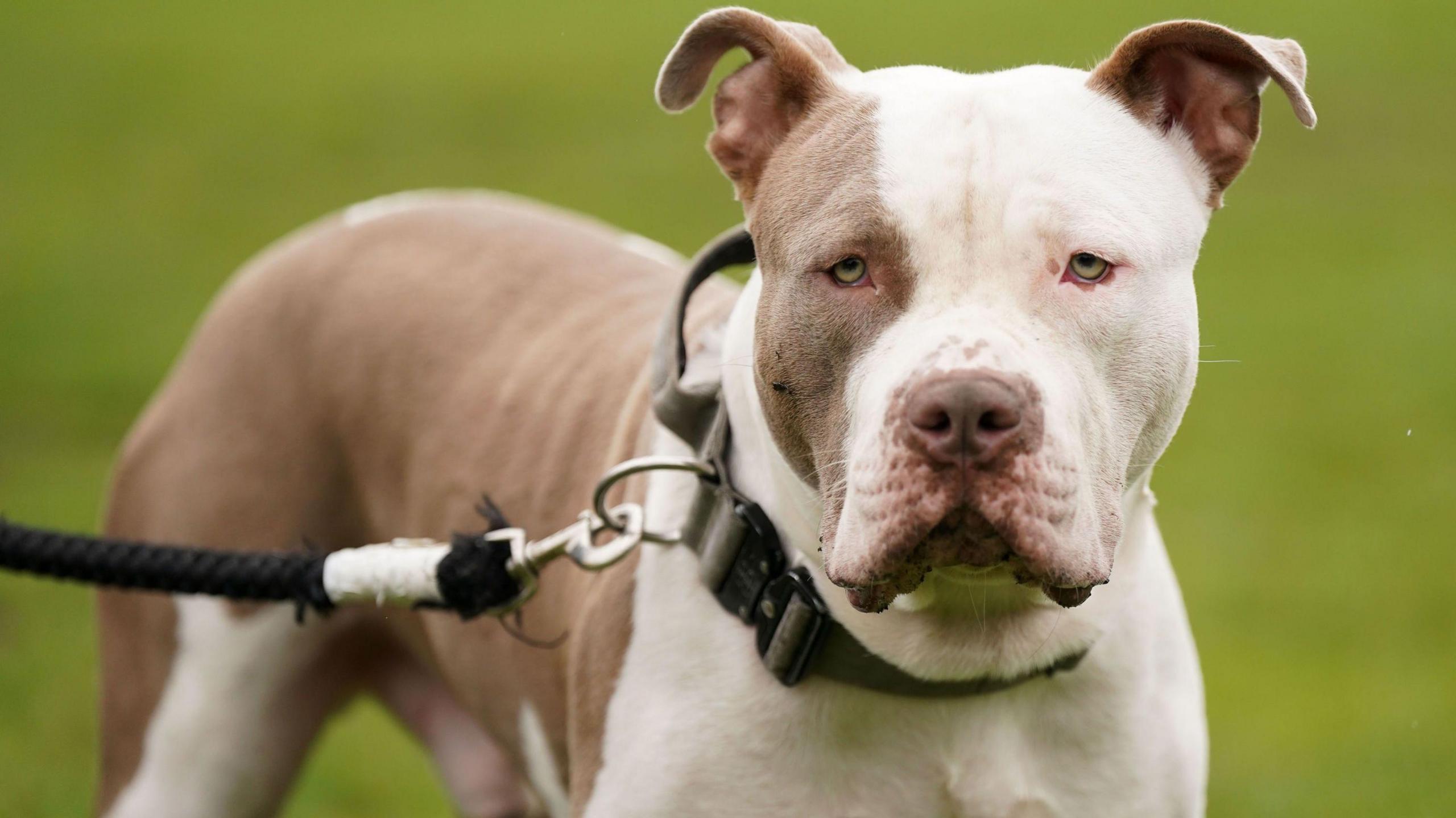Deadline for XL Bully exemption certificate passes

Legislation restricting the ownership of XL bullies came into force in February
- Published
The deadline for XL Bully owners to apply for a permit to legally keep their pets has passed.
Owners had until midnight on Wednesday to apply for an exemption certificate or face a prison sentence and large fine.
The Scottish government followed England and Wales by introducing restrictions on the ownership of the dogs, which have been linked to a series of fatal attacks in the UK.
Those found to be breaking the rules could face up to six months in jail and receive a £5,000 fine.
What are Scotland's new rules on XL bully dogs?
- Published23 February 2024
American XL bully ban dates confirmed for Scotland
- Published31 January 2024
Under the laws, the breeding and sale of the animals is now banned, while those already kept as pets must be muzzled in public places.
The abandonment and exchange of the dogs was also outlawed, external in February.
Current owners were given until 31 July to secure or apply for an exemption certificate to keep their pets.
Beyond that date, the dogs will also have to be microchipped and neutered, while the owners must have acquired third party insurance and pay a fee of £92.40.
Those who opted against keeping them could apply for a £100 payment to help cover the cost of having the animals put to sleep.
They also received a £100 payment as compensation for the loss of their dog.
Police have powers to seize any dogs found to be in breach of those conditions.
Rescue charity 'inundated' with requests for help
Kerryanne Shaw, who runs the All Bully Charity Rescue, said most of the dogs brought up from England had gone into homes.
But some had been dumped when the ban was extended to Scotland.
Ms Shaw said the charity had been "inundated" for requests for help, but said its hands were tied due to the new laws.
And she warned that the breed could become extinct in Scotland within the next 12 years, not accounting for underground breeding.

Kerryanne said her charity had been "inundated" with requests for support
Ms Shaw told BBC Scotland News that the last few months had been "emotionally exhausting".
She added: "The amount of dogs we are seeing that have been emaciated, abused and there is no help for them. It is heartbreaking.
"The public now has this perception that all XL Bullies are dangerous, which just isn’t the case. The majority of XL Bullies are big friendly giants.
"But you will find there are behaviour and aggression issues in dogs of every single breed.
"It is just because XL Bullies have become so popular - and popular to the wrong type of people."
Ms Shaw accused politicians of "putting a band aid" over the bigger issue of dangerous dogs.
And she said other breeds had been involved in serious incidents.
Ms Shaw warned: "It is not a breed-specific issue and we need to look at the bigger issue."
What is an XL Bully?

Guidance on identifying an XL Bully has been released by Defra
Part of the debate surrounding the ban on the breed has concerned the definition of what an XL bully is.
The breed is not officially recognised by the UK Kennel Club, but the Department for Environment, Food & Rural Affairs (Defra), external, external had published guidance on helping to identify the animals.
Its standards describe them as being 19-20 inches (up to 51cm) tall, with a "muscular body and blocky head".
The guidance also states they have a "glossy coat" and a "medium length and low set" tail.
They typically live between eight and 13 years and are the largest kind of American bully dog.
The Scottish government confirmed 2,507 applications for exemption certificates had been approved, as of Monday.
Justice Secretary Angela Constance said: "Dog attacks, although rare, can have a devastating impact on victims and consequences for owners which is why we are taking this action.
"The laws are in place to promote and support responsible ownership and public safety as effectively as possible."